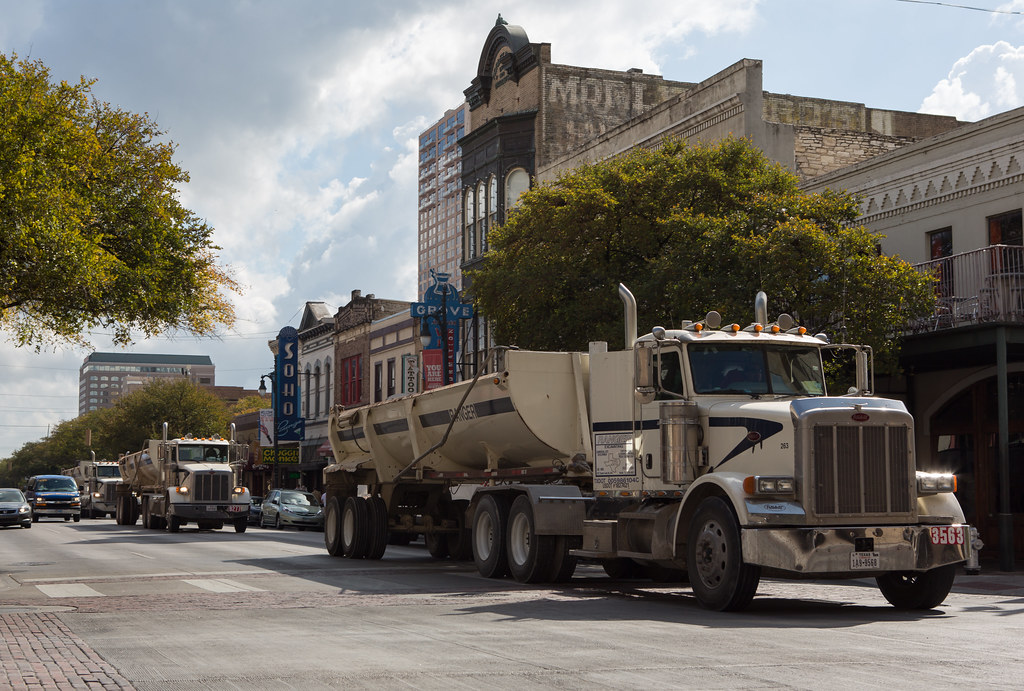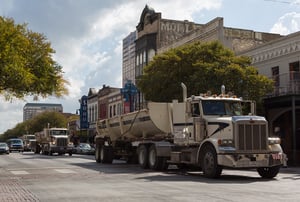Solutions to Help Overcome the Dangers of Urban Driving


Love of the open road is the main reason behind the career choice for many truck drivers. But, for truck and fleet drivers who must navigate busy urban streets, the road is anything but open. It’s more like an obstacle course that makes driving in urban areas more dangerous than driving on the highway.
That’s because, in urban areas, drivers must watch out for multiple situations that can distract them from the road, distractions like:
- Pedestrians
- Cyclists
- Drivers searching for parking spaces
- Unseasoned drivers who are unfamiliar with the area
Considering these situations, it’s no surprise that a 2016 report by the National Highway Traffic Safety Administration found that, because of the number of vulnerable road users in cities, 72% of pedestrian fatalities and 68% of cyclist fatalities occurred in urban areas.
However, the good news for fleet managers is the driving dangers associated with urban areas can be minimized. Here’s how:
Keeping Drivers Safe in the City
The number one concern for any fleet manager is ensuring the safety of their drivers. Just as there are solutions fleet managers can adopt to help improve driver safety on highways, there are solutions fleet managers can implement to improve their safety in urban areas.
Let’s look at three of these solutions that are key.
Consider an In-Cab Collision Avoidance System
Collision avoidance systems use sensor technology to detect impending collisions, alerting drivers of a problem before it’s too late. There are numerous systems available, but for urban areas, these systems should be given the most consideration:
- Forward Collision Warning System (FCW): An FCW system monitors a vehicle’s speed, the speed of the vehicle in front of it, and the distance between the vehicles. If vehicles get too close due to the speed of the rear vehicle, the system warns the driver of an impending crash.
- Pedestrian Detection System: Pedestrians and cyclists can pop up out of nowhere, giving drivers little time to react. A pedestrian detection system uses sensors to identify human movement on the road, helping drivers see a moving object and respond accordingly.
- Automatic Emergency Braking (AEB) System: AEB systems detect an impending forward crash with another vehicle in time to avoid or mitigate the collision. If the driver’s response is not sufficient to avoid the crash, the AEB system may automatically apply the brakes to prevent or reduce the severity of the impact.
Ensure Windshield Wipers and Tires are Weather-Ready
While the weather can affect highway driving, the key difference in urban areas is the amount of distractions. Drivers must watch out for pedestrians, cyclists, delivery vehicles, etc., so windshield wipers and tires are vitally important. To ensure that wipers allow drivers to clearly see what’s ahead, they should be inspected for signs of wear and tear, such as splits or cracks.
A good rule of thumb is, if wipers start to smear or push rain across the windshield rather than wiping it cleanly, they should be replaced. Blades should also be cleaned regularly with a non-abrasive glass cleaner or windshield washer solvent, and wiper reservoirs checked and topped off if needed.
Tires are the only contact a vehicle has with the road, and their condition is critical to wet weather traction. If tires are worn or tread depth is below 2 millimeters, the risk of hydroplaning increases. To determine condition, visually inspect tires and test tread depth with either of these methods:
- Put a penny headfirst into a tread groove. If Lincoln’s head is inside the tread, there is usable tread left. If Lincoln’s entire head is visible, it’s time to replace the tire.
- Look for the wear bars that are molded into the major tread grooves. If the wear bars are visible, the tire is worn and should be replaced.
Get On Board with GPS
If a driver doesn’t know where they’re going or what lies ahead, they’re likely not concentrating on the road, but on navigating. This can be particularly dangerous in traffic-heavy urban areas. It can lead to unsafe driving behaviors, such as harsh braking when suddenly coming up on a turn or accidentally turning down a one-way street.
With voice guided directions, route details, and road update capabilities, GPS tracking allows drivers to focus on their route. This helps reduce:
- Distracted driving
- Aggressive driving incidents
- Possibility of a rear-end collision
- Getting lost on unfamiliar roads
By following these tips, fleet managers can have peace of mind knowing that their fleet is driving safer and smoother through busy urban areas.